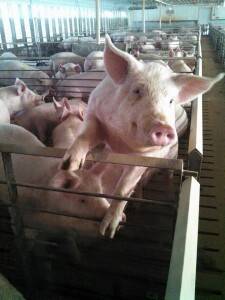What’s Your Reality?
As I write my post today, the weather is giving many Americans a shot of reality! As much as we like to think we’re in control of our lives, winter storms like this remind us we’re not. We have to face reality and weather this storm!
Reality is one of those words, which can be misunderstood much like the word sustainable. The definition of sustainable depends on what group or person is using it. The definition of reality, on the other hand, can be very specific!
“Reality is the state of things as they actually exist as opposed to an idealistic or notional idea of them,” says Rhonda Ross, creator of the Thank a Farmer® brand and programming to create understanding between rural and urban societies. “Reality is the state of quality of having existence or substance.”
Rubbing shoulders with some of the best in entertainment and athletics opened Rhonda to the reality that “anything is possible.” As a result, she’s accomplished some pretty amazing things. By age 13, Rhonda was professionally performing her comedy juggling act. By age 22, she had completed her journalism studies and was singing the National Anthem in venues like Madison Square Garden.
Fortunately for those of us in agriculture, Rhonda is channeling her passion and energy into traveling the countryside, giving kids and their parents a first-hand look at where food comes from. Her “Thank a Farmer” Facebook page has more than 23,700 fans; she shares interesting facts that on this page that even farmers enjoy. Rhonda educates others about modern farming in a very entertaining way with her Ag Magic Show. When she performs at the Iowa State Fair, I always make it a point to visit with her. I always enjoy learning from her and appreciate her efforts to promote appreciation for what farmers do.
Now back to reality…
I have blogged about many of the ways farmers and our products are perceived. The way we farm and ranch now is very different from words sung in Old McDonald’s Farm or Disney cartoons. Today’s agriculture is so vast, and there so many different ways to produce every product that is consumed.
 In my own operation, I no-till as much as I can. Does that make the way I farm better than someone that strip tills or minimum tills? Of course not! This practice doesn’t work everywhere.
In my own operation, I no-till as much as I can. Does that make the way I farm better than someone that strip tills or minimum tills? Of course not! This practice doesn’t work everywhere.
When I visited the Ukraine, I was fascinated by the equipment they used. Farmers there raise crops very differently than I do. I use seed that is modified, so that I don’t need as many chemicals and can’t make fewer trips across the field. Reality is that Ukrainian farmers can’t plant the same seed as I do. They need more tillage and more chemicals to grow their crops. Right or wrong, this is the reality.
The best way to raise livestock is also an ongoing debate. In past articles, I have shared struggles with raising pigs outside in Iowa. I try to eliminate all the stress that I can for my animals, so I raise my hogs inside climate-controlled barns. On a cold, windy day like yesterday with wind chills of 45 degrees below zero, the reality is that my pigs are way better off inside. Yesterday I shared photos on my Facebook page of how comfortable my pigs really are. That’s reality!
Farmers and ranchers use their many years of experience plus current technology to continually improve how they raise crops and livestock. There are reasons I farm the way I do, yet others use emotions to debate it – and to sway the debate!
Emotion plays a big role in the ongoing GMO food labeling debate, too. A stigma is being created that will keep some people from buying a product labeled this way. Reality is, non-withstanding all the junk studies, there’s no proof that GMOs are harmful to our health. Fact is, organic and conventionally grown foods do not vary significantly from a nutritional perspective. Plus, organic food is not guaranteed to be free of pesticides. Reality is, Americans have many food choices available.
